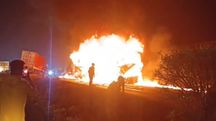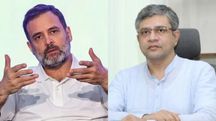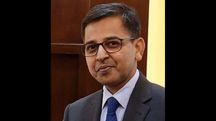Kerala houses world’s first palm leaf manuscript museum
Besides brightening the state's culture space, the museum also serves as a reference point for historical and cultural research for academic and non-academic scholars.
 palm leaf manuscript museum
palm leaf manuscript museumThe recently opened Palm leaf Manuscript Museum in the Kerala capital has further brightened the state's cultural and academic space.
Billed as the world's first palm leaf manuscript museum, the facility is essentially a repository of curious nuggets of administrative, socio-cultural and economic facets of Travancore spanning a period of 650 years till the end of the19th century, besides documents relating to territories of Kochi in the state's middle and Malabar further north.
Besides brightening the state's culture space, the museum also serves as a reference point for historical and cultural research for academic and non-academic scholars, officials said. Among the manuscripts that the museum houses are accounts of the famed Battle of Colachel wherein the valiant Travancore king Anizham Thirunal Marthanda Varma (1729-58) defeated the Dutch East India Company at Colachel, 20 km northwest of Kanyakumari in present day Tamil Nadu. This 1741 victory ended Dutch expansion in India, and Travancore under Marthanda Varma became Asia's first state to defeat the expansionist designs of any European power.
The museum, which opened last week, has 187 manuscripts chronicling a mine of stories based entirely on primary sources: Documents written on cured and treated palm leaves consigned to the corners of the records rooms.
The archival material, in the first phase, was chosen after painstaking sifting from a huge stock of haphazardly stored 1.5 crore palm-leaf records from across the state. Today, the select documents occupy what is the world's only manuscript museum that solely displays sheaves of palm leaf materials and allied paraphernalia such as styluses and carriers of the Cadjan bundles, they said.
Bamboo splints and copper plates, too, make a presence. Officials are elated about the museum set up on the ground floor of the three-century-old complex which functions as the Central Archives under the state government. More so, since this is just the first move towards a major heritage conservation project. With its eight galleries that also feature videos and QR code systems permitting acquisition of information, the facility is wooing common people and niche researchers alike.
The manuscripts also outline the evolution of writing in the region, points out Dr V Venu, State Additional Chief Secretary (Archaeology, Archives and Museums). "They give visitors an idea about the emergence of the Malayalam script from older systems such as Vattezhuthu and Kolezhuthu," he said. "Primarily, the galleries give a glimpse of the complex administrative systems of land management, path-breaking proclamations of the Travancore royals and international negotiations as well as agreements, besides documents that became historical milestones," said Venu, also a former Director General of National Museum in Delhi.
The museum here is expected to breathe new life into exploring the entire manuscript collection and hopes to attract more researchers and students. The collection of palm leaf records will soon move to a modern facility in the city, with arrangements for scientific storage and study. "It is a safe set-up, giving a comfortable space for research," Venu said. R Chandran Pillai, Executive Director of the government's Keralam Museum, the nodal agency assigned to set up and refurbish repositories across the state, claimed that the palm leaf storehouse had no previous models anywhere in the world. The manuscripts straddle six centuries, from 1249 CE to 1896, said J Rejikumar, who heads the Directorate of Archives.
According to author-historian S Uma Maheswari, the palm leaves have the capacity to plug certain gaps in Kerala's history. "The records may not guarantee continuity to past events, but they own a great potential to lend new angles to existing narratives and strengthen their composition as well as colour," said the writer of the two-volume Mathilakam Records that essays Travancore history of the last millennium. "Each item in the museum is a commentary on the state affairs: Revenue, defence, administration, health, education, religion, caste, corruption, crime and what not," Maheswari said. The museum has eight galleries representing as many segments: 'History of Writing', 'Land and people', 'Administration', 'War and peace', 'Education and Health', 'Economy', 'Art and culture' and 'Mathilakam Records'. The tile-roof museum housed the Central Archives two years after the department was formed in 1962. Before that, it had been the Central Vernacular Records Office since 1887. Till then, the building was a prison under the Travancore ruler — and, prior to it, barracks of his Nair army.
Copyright©2025 Living Media India Limited. For reprint rights: Syndications Today









